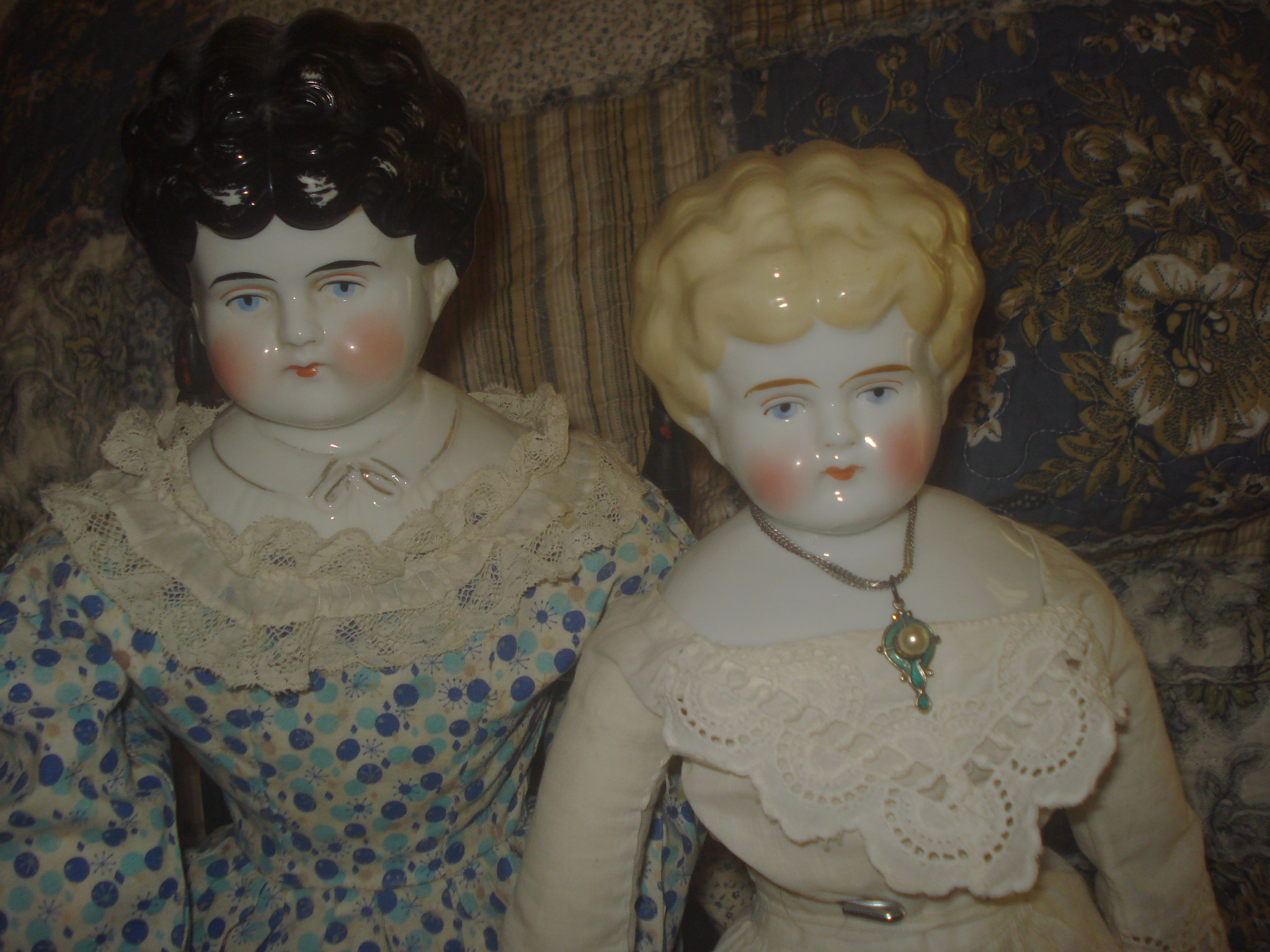
BONNET DOLLS
Bonnet Dolls are somewhat older than most dolls we study, but are a
very interesting category. They are a class of dolls that were made
with the hat molded on the doll head. There were made of china, wax,
parian, celluloid, wood, composition, paper mache and straw. They
usually have painted eyes.
Many years ago no lady would appear outside her home without a scarf
or a bonnet covering her head. And these dolls depict that bygone
era. Dolls have always represented the fashions of the era they were
made. Many half or pincushion dolls also fit in this category of
dolls as they often have a head covering. The bonnet styles can be
very stylishly beautiful or very whimsical. There is one that I
love. The doll has a butterfly for her hat.

The hats can be a very large style to a small hat or scarf.
The dolls and half dolls were made in a variety of sizes usually
sixteen inches tall or less. The half dolls were usually used on
pincushions or as handles for mirrors and dresser sets. The larger
heads and arms were
sometimes sold without a body and were to be placed on a cloth body
and dressed by the owner's Mother. Therefore the clothing styles are
as varied as the many people that dressed them are. Many examples of
these dolls can still be found in original clothing at reasonable
prices, although prices vary by area.

These dolls when new were inexpensive compared to the tinted bisque dolls.
Note the white skin color of these dolls. These dolls today are sought after
by collectors and some are reasonably priced.
I have in my doll eollection some bonnet dolls. Here is a picture of my
largest doll and a favorite. She is dressed in a dress that was made from a
ladies hankerchief.




